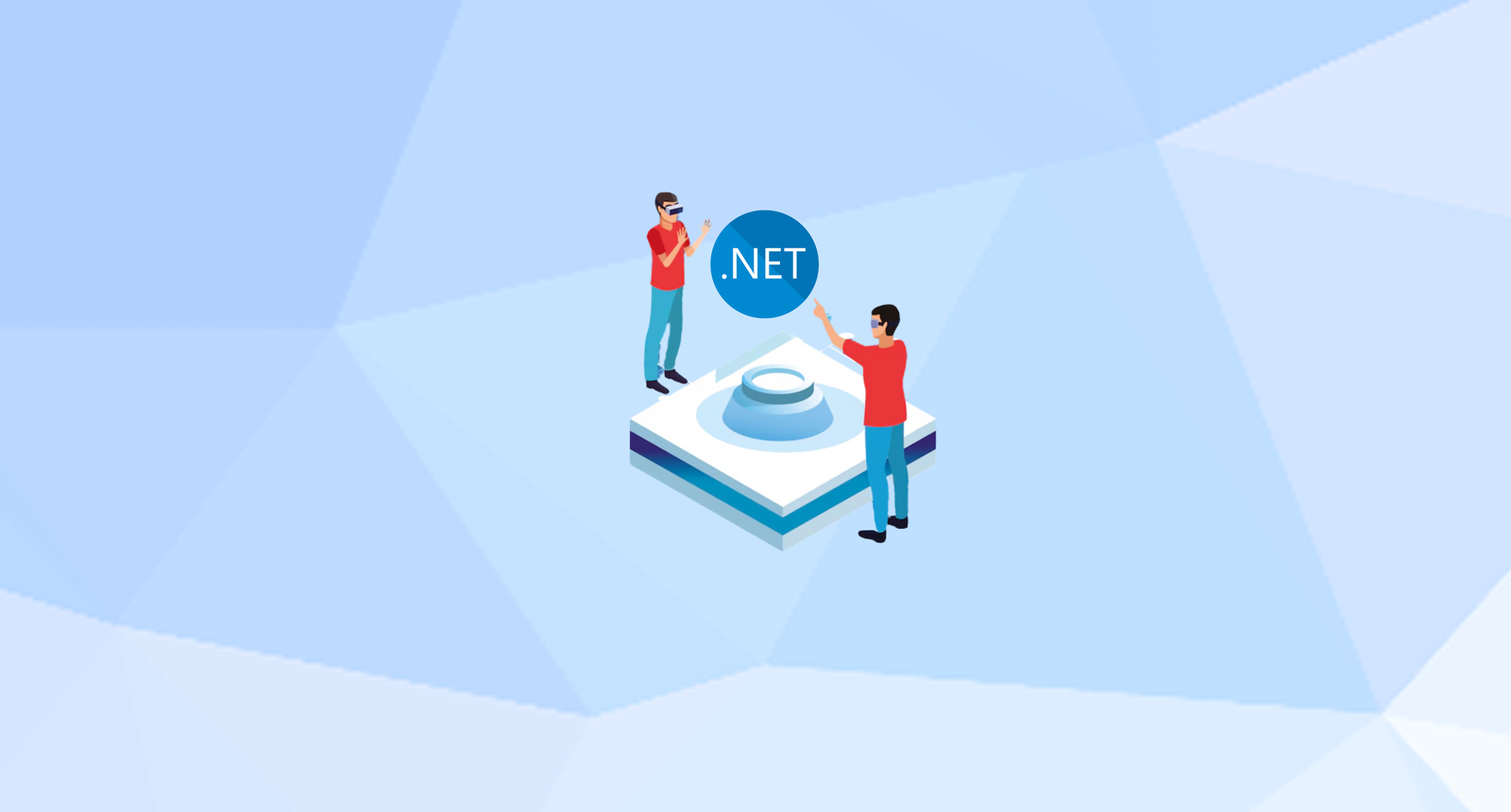Navigating the .NET Evolution: Transformative Trends Shaping the Future of .NET

.NET is at the forefront of the Cloud revolution, with Azure providing a native environment for .NET applications to thrive.
As we stand on the cusp of a new era in software development, .NET is poised to play a pivotal role in shaping the digital future. Over 25.2% of all web apps and websites are developed using .NET.
With its robust framework and ever-expanding capabilities, .NET is not just adapting to change – it’s driving innovation across the industry. Let’s explore the exciting developments on the horizon for .NET developers and the businesses that rely on this powerful ecosystem. This blog will discuss the upcoming trends to be seen in the .NET development scene in the IT industry.
In a dynamic business environment, scalability is crucial. IT services provide the flexibility to scale up or down your resources based on changing business needs. Cloud services, for instance, allow seamless expansion of storage and computational power

Serana Belluci
Product Designer
Upcoming Trends in .NET Development
The Cloud-Native Revolution
The cloud is no longer just a buzzword – it’s the new normal. For .NET developers, this shift presents both challenges and unprecedented opportunities. By 2026, the cloud computing market is expected to reach a staggering $947.3 billion. This meteoric rise is reshaping how applications are built, deployed, and scaled. .NET is at the forefront of this revolution, with Azure providing a native environment for .NET applications to thrive. Consider the case of Maersk, the global shipping giant. They leveraged .NET and Azure to transform their legacy systems into a modern, cloud-native architecture. The result? Improved efficiency, reduced costs, and enhanced ability to innovate rapidly. The future of .NET in the cloud looks bright, with trends pointing towards:
* More seamless integration between .NET applications and cloud services
* Serverless architectures will become more prevalent, allowing developers to focus on code rather than infrastructure.
Blazor: Revolutionizing Web Development
Blazor represents a paradigm shift in web development for .NET developers. By allowing developers to build interactive web UIs using C# instead of JavaScript, Blazor is breaking down the traditional barriers between web and desktop development.
The future of Blazor looks promising:
*Growing adoption for building Single Page Applications (SPAs)
* Improved performance with ongoing optimizations to WebAssembly
* Increased integration with other .NET technologies and cloud services.
As Blazor matures, we can expect to see more large-scale applications leveraging this technology, potentially reshaping the landscape of web development in the .NET ecosystem.
Xamarin and .NET MAUI: The Cross-Platform Revolution
Xamarin, and its evolution into .NET Multi-platform App UI (.NET MAUI), is at the forefront of .NET’s cross-platform strategy. This framework allows developers to build native mobile applications for iOS and Android using C# and .NET.
The future of cross-platform development in .NET is exciting:
* .NET MAUI will unify mobile, desktop, and web development under a single framework
* Improved performance and closer feature parity with native platforms
* Enhanced integration with cloud services and AI capabilities
As .NET MAUI matures, we can expect to see a surge in cross-platform applications, blurring the lines between different types of apps and providing users with seamless experiences across devices.
Kubernetes and .NET: Orchestrating the Future
Kubernetes has become the de facto standard for container orchestration, and .NET fully embraces this trend. The integration of .NET with Kubernetes is opening up new possibilities for scalable, resilient applications.
Looking ahead, we can anticipate:
* More .NET applications leveraging Kubernetes for deployment and scaling
* Improved tools and libraries for managing .NET applications in Kubernetes clusters
* Increased adoption of microservices architectures in .NET, facilitated by Kubernetes
The combination of .NET and Kubernetes is set to enable more flexible, scalable, and resilient application architectures.
Microservices: Breaking Down Monoliths
Microservices architecture is reshaping how .NET applications are structured. Instead of building large, monolithic applications, developers are now creating smaller, loosely coupled services that can be developed, deployed, and scaled independently.
This architectural shift is particularly well-suited to .NET Core (now .NET 8 and beyond), which provides excellent support for building and deploying microservices.
The future of microservices in .NET development looks promising:
* More tools and frameworks specifically designed for building microservices in .NET
* Increased adoption of event-driven architectures in .NET microservices
* Better integration between microservices and serverless computing models
Advanced Features Using .NET 8
.NET 8 introduces a suite of powerful new features designed to meet the demands of modern, cloud-native, and data-intensive applications. These enhancements not only improve performance and security but also provide developers with advanced tools to build more robust and scalable solutions.
Some notable new key features of .NET 8 include:
* Garbage Collector Improvements: Dynamic memory limit adjustments for cloud-native apps, optimizing memory use in environments like Kubernetes.
* JSON Enhancements: Improved serialization with support for new numeric types, benefiting applications using floating-point hardware in accelerators and NPUs.
* Randomness Tools: New tools for incorporating randomness directly into code, ideal for machine learning applications.
* Cryptography Enhancements: Addition of SHA-3 support, offering stronger security options to protect against evolving cyber threats.
* Silicon-Specific Features: Performance boosts through the Intel AVX-512 instruction set, enhancing data processing in high-performance applications.
* Time Abstraction: A new time abstraction feature allows for seamless time zone management, reducing time-related bugs in global applications.
With its performance enhancements, developer productivity tools, and long-term support, .NET 8 is well-positioned to drive innovation in cross-platform and cloud-native development, setting a strong foundation for future advancements.
Intelligent Applications Using ML.NET 1.4
The future of .NET is increasingly linked to its integration with machine learning (ML), enabling the creation of intelligent applications. ML.NET, Microsoft’s open-source ML framework, plays a crucial role in this evolution by allowing developers to build custom ML models within .NET applications.
Key points for the future of .NET and ML integration:
* Empowering Developers: ML.NET allows .NET developers to integrate machine learning models directly into their applications, without needing extensive ML expertise.
* Scalable Solutions: The future of .NET will see increased adoption of ML.NET to build scalable, intelligent applications that can adapt to various industry needs.
* Innovation Driver: By integrating ML into the .NET ecosystem, developers can push the boundaries of what’s possible, creating more responsive and secure applications.
ML.NET can analyze customer behavior to generate personalized product recommendations, significantly enhancing user experience and driving sales. In the banking sector, ML.NET’s ability to identify anomalous transaction patterns can be leveraged to detect and prevent fraud, ensuring greater security for online transactions. These industry-specific applications highlight how the integration of machine learning into .NET will enable the development of more intelligent, secure, and user-centric solutions.
As machine learning becomes a cornerstone of modern application development, ML.NET’s integration with .NET will be essential for building the next generation of intelligent and innovative applications.
Community and Ecosystem Growth: The Driving Force Behind .NET
The .NET community is more than just a collection of developers; it’s the backbone of the platform’s evolution. With members constantly sharing knowledge, best practices, and innovative solutions, the community drives .NET forward, ensuring it remains at the forefront of modern development. The shift to open source has only amplified this dynamic, allowing for greater collaboration and faster integration of new features.
* Ecosystem Expansion: The .NET ecosystem continues to flourish, bolstered by a wealth of third-party libraries and tools that extend its capabilities:
* Third-Party Libraries: A diverse array of libraries and tools enhances the functionality of .NET, giving developers the flexibility to build anything from simple apps to complex, enterprise-grade solutions.
* NuGet Package Manager: NuGet simplifies the process of managing and distributing libraries, creating a collaborative environment where developers can easily share and reuse code, accelerating development cycles.
* Community Contributions: The open-source nature of .NET has empowered the community to contribute directly to its growth. This has led to a rapid pace of innovation, with new features and improvements being quickly integrated into the framework.
The Future of .NET: A Bright Horizon
As we look to the future, it’s clear that .NET development is entering an exciting new phase. From cloud-native applications to cross-platform solutions, from AI integration to enhanced security features, .NET is evolving to meet the challenges of tomorrow’s digital landscape.
As .NET continues to evolve and expand, it’s poised to play a crucial role in shaping the future of software development. Whether it’s powering cloud-native enterprise applications, driving cross-platform mobile experiences, or enabling AI-driven insights, .NET is set to remain at the forefront of innovation in the years to come.
The future of .NET development is not just about new features or technologies – it’s about creating a more connected, intelligent, and secure digital world. And from what we can see, that future looks incredibly bright. This is where Arna Softech can help your company.
With over a decade of experience and a team of Microsoft-certified developers, Arna Softech has consistently demonstrated its ability to leverage the latest .NET technologies and best practices. Whether it’s seamless cloud integration, building robust microservices architectures, or developing cross-platform applications, Arna Softech has the expertise to tackle the most challenging projects.


